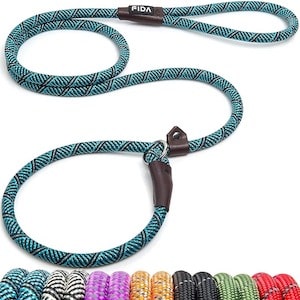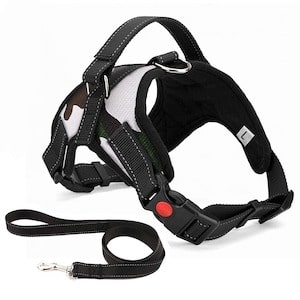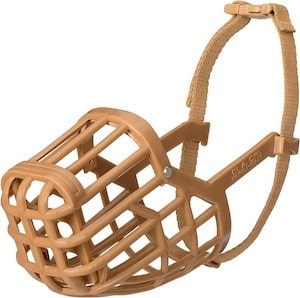If you are looking for a simple and effective way to walk and train your dog, you might want to consider a slip lead. A slip lead is a type of leash that forms a loop around the dog’s neck and tightens or loosens according to the dog’s movement.
In this article, we will explain what a slip lead is, how to choose the right one, and how to use it correctly for training and guiding your dog.
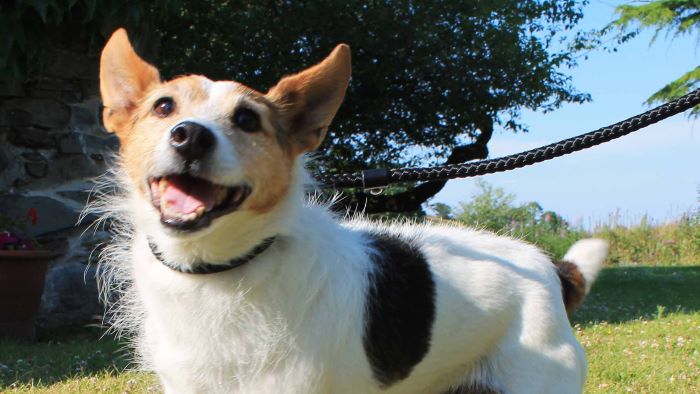
Key Takeaways
- A slip lead is a type of leash that forms a loop around the dog’s neck and tightens or loosens according to the dog’s movement.
- A slip lead can be used for training and guiding your dog, but it requires proper adjustment, reward, consistency, patience, and caution.
- A slip lead has some benefits and drawbacks, such as quick and easy control, communication and subtle guidance, but also possible escape, fear, or discomfort.
- A slip lead is not suitable for every dog or owner, and there are some alternatives, such as retractable dog leads, double ended leads, harnesses, and head collars.
You Might Also Like:
What Is a Slip Lead?
A slip leash, also known as a slip lead or training lead, is a useful tool when it comes to guiding and training your dog. It is designed for communication and subtle control, it may be an excellent choice in teaching your dog the right manners and ensuring their safety during walks.
How to Use a Slip Lead?
Using slip lead correctly is important to make sure comfort of your dog and complete their training successfully. Here are some tips to use a slip lead correctly:

1. Choose the Right Slip
Before starting always choose a lead that is made of high-quality materials, that may not harm your dog’s skin. Your dog must feel comfortable.
According to Dog Trainer Victoria Schade at PetMD, “The standard lead length is between four and six feet, which gives your dog enough room to roam and do his business but isn’t so long that it could put him in danger.”
Anything shorter than four feet might make it difficult for your dog to explore and stop without dragging you around.
The weight of the leash is an important concern as well. Watch out for overly heavy leads that might be uncomfortable for smaller dogs.
2. Correct Placement and Fit
“It is most crucial to use a lead that is in the right place and fits perfectly, to avoid any unwanted event. Make sure there is just enough slack to fit 2 fingers, and no more than 2 fingers. Anything loose than this your dog will eventually slip out,” suggests The SF SPCA.
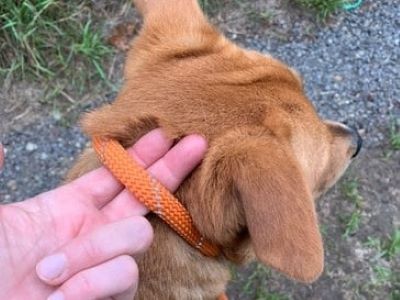
3. Slow Introduction
Put it on them for short periods while giving your dog lots of high-value treats until your dog is comfortable in the collar. Then they should only wear it when you are taking them out on a leash. Don’t leave the head collar on your dog all the time; eventually, they will manage to pull off the muzzle loop and use it as their chew toy!
4. Confident Walks
Gentle guidance works best. Always hold the lead with confidence. Never pull it unless you need to correct some behavior or your dog is moving too fast. It will create a barrier-like loop, signaling your dog to not do that behavior.
5. Rewards and Behavior Correction
Remember how proud your parents were when you got that star on your report card? They made you want to do it again, right? That’s positive reinforcement.
Appreciating your dog for good behavior sounds pretty fun and simple! But to practice the technique effectively, Here are some basic approaches that you need to follow[1]:
- At first, reward them with a treat four out of every five times they do the right behavior. Over time, reward three out of five times. Don’t decrease the rewards too quickly or your dog could become frustrated or confused.
- Continue to praise every time—although once your dog has learned the behavior, your praise can become less exciting.
- How often do you provide the reward so that your dog doesn’t figure out that they only have to respond every other time, for example? Your pet will soon learn that if they keep responding, eventually they’ll get what they want—your praise and a few treats.
Be careful that you don’t use reward unwanted behaviors. For example, if you let your dog outside every time they bark at a noise in the neighborhood, you’re giving a reward for a behavior you want to discourage.
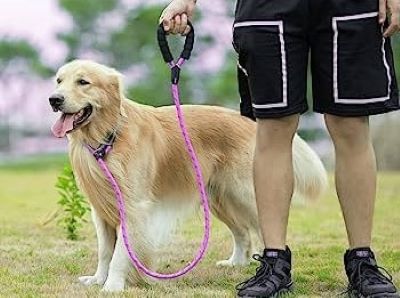
6. Patience
When it comes to training for something consistency is the key! If your dog is learning fast then maintain the pace and continue your efforts to make your dog’s life comfortable.
Your dog and you both are in the learning process. In this being patient is important. Remember to be slow and encourage good behavior of your dog, and never use lead as a punishment.
Pros and Cons of Slip Lead
Slip leads have many benefits. Here are some of them[2]:
- Better control of your dog when walking in a crowded area.
- Easy to use, take on and off on the go!
- Good for communication and subtle control
- Varieties available as per breed and preference
- Keeps dog safe and stops from running away
Using slip lead comes with its advantages but there are some drawbacks too. It takes time and training for your dog to learn. This highlights the importance of knowing how to use a dog training leads properly.
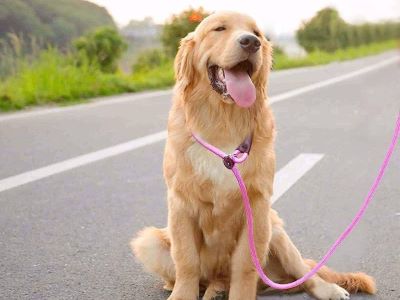
There are some potential risks associated, with pulling too hard. Your dog may eventually learn to escape them.
Not all dogs like leads, some may simply fear them. In such cases always consult with a professional who will provide you with the right guidance for your specific situation.
Some pet owners may prefer using a retractable dog lead instead of a standard slip lead. When choosing the best retractable dog lead, look for one made of durable material that allows your dog some freedom to explore while keeping them safe.
FAQs
Are Slip Leads Cruel?
Check chains (choker chains or slip collars) or pronged/pinch collars must not be used as they cause pain and distress to animals. RSPCA does not condone the use of electronic shock collars or citronella collars to modify your dog’s behaviour.
How to Use a Slip Lead on a Puppy?
Hold the loop (which will be passed over the dog’s head) with your dominant hand. It is best to hold the loop at the joint (where the rope passes through the ring) to prevent the loop from slipping (and changing size) when being placed on the dog. Hold the end of the lead with your non-dominant hand.
What Age to Use a Slip Lead?
My puppy got used to wearing a show lead (a fine slip lead) from a very young age, around 8 weeks. But, this is a very different thing indeed to going on walks with it, as she was wearing it only when training her show stack and, later, gaiting.
Can I Use a Slip Lead All the Time?
Generally, a slip lead is primarily useful when trying to move or catch a dog quickly. Most shelters, daycares, and veterinary practices advise against using slip leads due to the high potential for injury if a dog lunges suddenly.
What Is the Benefit of a Slip Lead?
Slip collars and slip leads are quick, effective, and comfortable devices for training and everyday casual use. Most slip leads are also not bulky and usually roll up easily and fit in a pocket for storage.
What Is a Lead Instead of a Leash?
According to trainer, Wendy Volhard, a lead is allowing you to “lead” your dog on a walk versus the dog leading you. A leash is basically a connection to your fur baby, but he is in control. This is a bad habit and comes with some risk. She states that many pet parents will choose a harness and extending lead combo.
Summary
These were some correct and effective tips to use slip leads for your dogs, to make it more easy and comfortable for them. It makes a bond of trust and understanding between you and your dog.
With patience, kindness, and effective communication, you can build a strong and positive relationship with your dog while enjoying those peaceful and interesting walks with your dog.
For owners looking for more control, a double ended lead may be preferable to a slip lead. The dual clip design provides more leverage when guiding your dog. Be sure to follow our tips on how to use double ended dog lead properly
Reference:
